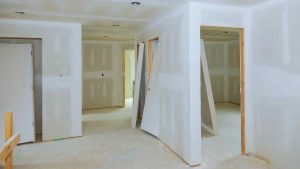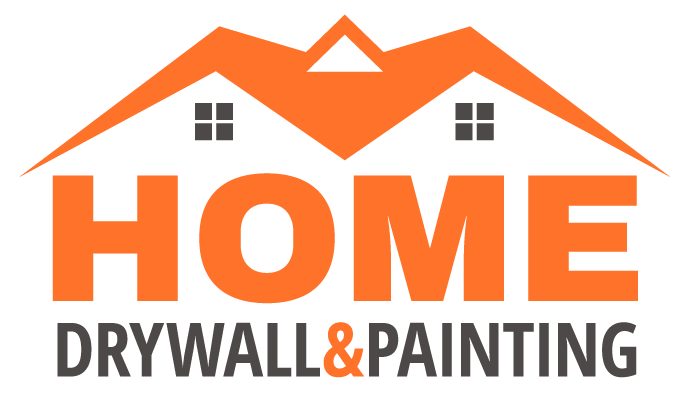Drywall Repair in Hopkins MN | What is the Difference Between Drywall and Sheetrock?
 It’s not uncommon for home builders and remodelers to use the terms sheetrock and drywall interchangeably. But if you’re trying to figure out how much sheetrock you need for your next project, it’s important to know the difference between these two materials first. Drywall Repair in Hopkins MN
It’s not uncommon for home builders and remodelers to use the terms sheetrock and drywall interchangeably. But if you’re trying to figure out how much sheetrock you need for your next project, it’s important to know the difference between these two materials first. Drywall Repair in Hopkins MN
Sheetrock is a manufactured gypsum plaster product made by combining calcium sulfate hemihydrate, water, and cellulose fiber (usually wood chips). Gypsum is mined naturally but can also be processed from sea water or mined salts. It has long been used as a building material because of its low cost and ability to be molded into different shapes while still retaining strength—but only when combined with paper! And that’s why we call it “drywall”—because it’s made of plaster sandwiched between two sheets of paper.
The terms drywall and sheetrock are used interchangeably to describe the same material, which is gypsum wallboard.
In the United States, drywall is a generic term that refers to gypsum wallboard. Sheetrock is an American brand name for gypsum wallboard produced by Georgia-Pacific Gypsum Co., commonly used in construction and remodeling projects. The term sheetrock is also used to describe other brands of gypsum wallboard produced by companies other than Georgia-Pacific Gypsum Co., although these products do not necessarily carry the Sheetrock brand name.
Drywall is a panel made of gypsum plaster pressed between two thick sheets of paper.
Drywall, also known as gypsum board or sheetrock, is a panel made of gypsum plaster pressed between two thick sheets of paper. Drywall is used to finish interior walls and ceilings. It can be used in many different places, including homes and commercial buildings.
Drywall makes for a much more efficient method of construction than the old technique of wet plastering.
The biggest advantage drywall has over wet plaster is its speed. With drywall, you can build an entire wall in a fraction of the time it would take to apply plaster and sand it smooth. This is true even if you’re working with a small crew and doing everything by hand.
The second big plus for drywall is that it requires little skill to install properly. Most home improvement projects require some level of skill and experience, but this isn’t one of them; as long as you can cut parts out of a sheet of plywood or press them into place on your walls with nails or screws, you can do this job yourself without much trouble at all.
Types of drywall include regular, fire-resistant (also called firecode), water-resistant, mold-resistant and impact-resistant drywall.
In addition to the above, there are four other types of drywall: regular, fire-resistant (also called firecode), water-resistant and mold-resistant. The following is a comparison of these different types:
Regular drywall—This is the most common type of drywall and is used for interior walls. It does not resist fire or water damage as well as other types and should only be used in places that don’t need extra protection from moisture such as basements or bathrooms.
Fire-resistive (firecode) drywall—This type has an added layer of gypsum board insulation on both sides that helps prevent flames from spreading through it during a fire; it also provides superior soundproofing properties compared with regular sheets because sound waves cannot penetrate through its thick material. Home Drywall and Painting can help with drywall installation and repair for your Hopkins Minnesota home.
The most common thicknesses of drywall are 1/4 inch (for curved surfaces), 3/8 inch (for small repairs), and 1/2 inch (standard interior walls).
The most common thicknesses of drywall are 1/4 inch (for curved surfaces), 3/8 inch (for small repairs) and 1/2 inch (standard interior walls). Drywall comes in four different grades: Type X is used for ceilings and floors; Type A is ideal for indoor applications; Type B is intended for use outdoors; and Type C is made from recycled material.
There are two main types of drywall: gypsum-based panels, which come in 4-, 5-, 6-, 7-, 8- or 9-foot widths; and fiberglass-reinforced panels that are usually 4 feet wide but can also be up to 12 feet wide. Fiberglass drywall consists of paper sandwiched between two layers of fiberglass matting with a thick layer of gypsum plaster on one side only. The advantage to this type of material is that it’s more durable than regular sheetrock—it doesn’t dent easily when hit by something heavy like an errant football thrown by your son while you’re sleeping off last night’s drinks on the couch!
Sheetrock and drywall both refer to the same material.
You may have heard the term drywall, and wondered if it’s a different material than sheetrock. Drywall is the most common type of wallboard, but it’s also sometimes called wallboard. So yes: Sheetrock and drywall both refer to the same material.
Sheetrock and drywall are gypsum plaster pressed between two sheets of paper on which glue has been applied. Although they can be formed into different shapes, all gypsum panels share these basic characteristics:
- They’re made from gypsum plaster combined with mineral additives to strengthen them more;
- They’re coated with a release agent so that when you hang them on a wall or ceiling, they’ll stick firmly in place without having to use screws or nails; and
- They’re shipped as flat sheets—they don’t need to be positioned onto studs before being hung up on your walls because there simply aren’t any studs in their manufacture (instead, the panels are nailed directly into place).
The term drywall is used as a name for this material, but more often than not it is called sheetrock. The two terms are interchangeable and refer to gypsum plasterboard, which is the most common type of wallboard used in construction today. This type of board has been around since the late 1800s when Joseph L. Rice invented it while working on his father’s farm in Maine. It has since been improved upon with new products such as fire-resistant sheetrock or water resistant sheetrock that resists moisture damage during construction projects or flooding from bad weather conditions like hurricanes or tornadoes!
Reach out to your local drywall contractor. Home Drywall and Painting is your trusted drywall company that can help with your drywall and painting needs. We can help install drywall in your home or repair drywall in your Hopkins MN home. Contact us today to have your next project started soon!
We offer Residential Drywall and Painting Services in the Following Cities of Minnesota:
Denver| Minneapolis | Roseville | St Paul | North St Paul | Coon Rapids | Brooklyn Park | Minnetonka | Edina | Woodbury | Lakeville | Eden Prairie | Fridley | Maplewood | Shoreview | Arden Hills | Mounds View | Maple Grove | Shakopee | Chanhassen | Rogers | Plymouth | Golden Valley | Victoria | Champlin | Chaska | Prior Lake | Savage | Hopkins | Andover | St Louis Park | New Brighton | Apple Valley | Burnsville | Ramsey | Anoka | Crystal | Ham Lake | Bloomington | Blaine | New Hope | Richfield | Spring Lake Park | Columbia Heights | Brooklyn Center | Eagan | Little Canada | Mendota Heights | Oakdale | Vadnais Heights | White Bear Lake | Stillwater | Centerville | Falcon Heights | Forest Lake | Gem Lake | Hugo | Lino Lakes | Lauderdale | Mahtomedi | North Oaks | Wyoming | Hudson | Lake Elmo | Grant | Bayport | Newport | Pine Springs | Inver Grove Heights | Rosemount | Orono | St Anthony | Circle Pines | East Bethel | Wayzata | Dellwood | Cottage Grove | Willernie | Pine City | Rush City | Stacy | North Branch | Harris | Cambridge | Braham | Mora | Ogilvie | Grantsburg WI | Siren WI| Sandstone | Finlayson | Willow River | Moose Lake | Sturgeon Lake | Hinckley | Mission Creek | Rock Creek | Bethel | St Francis | Isanti | Glendale | Edgewater | Lakewood
